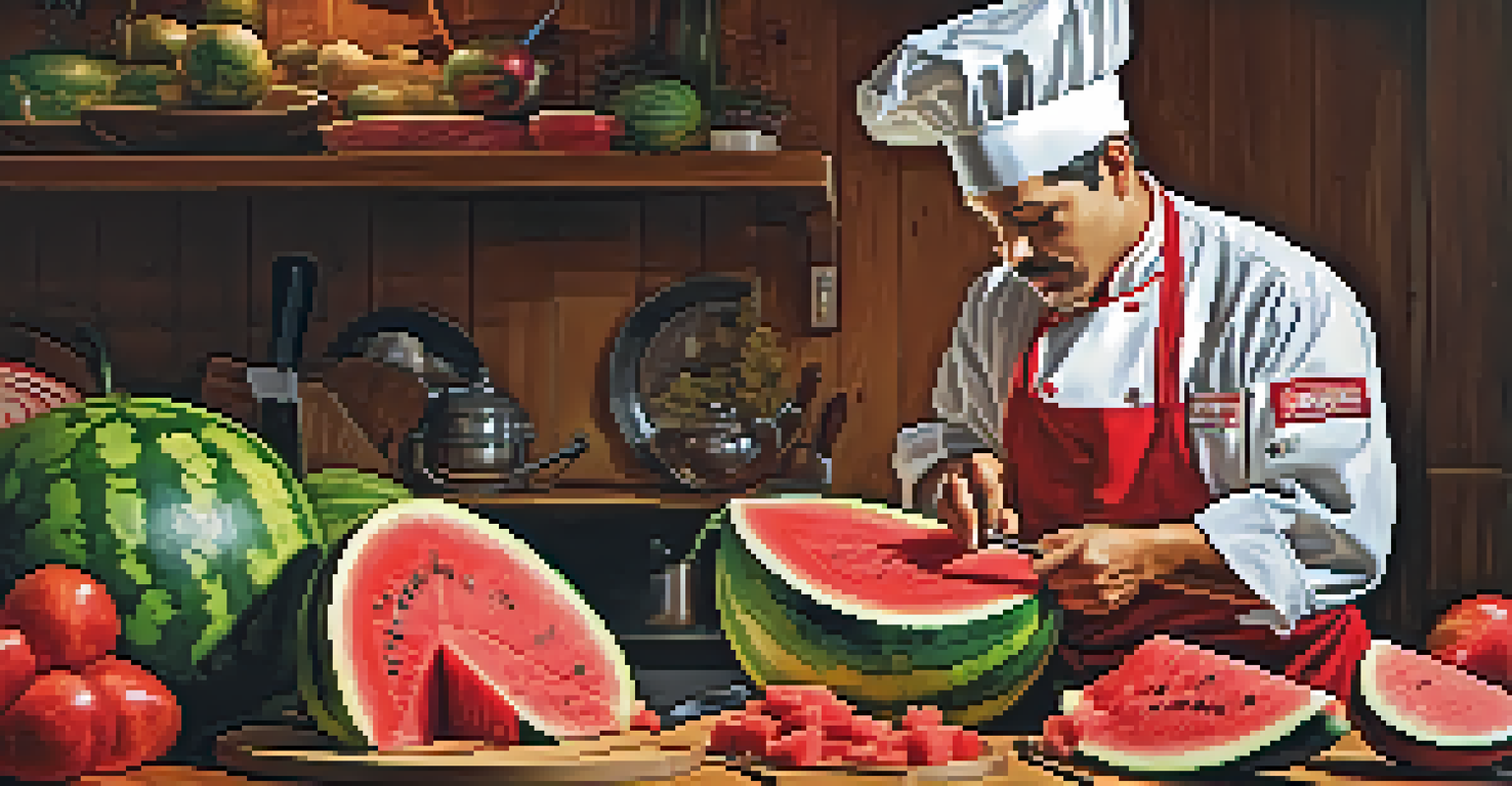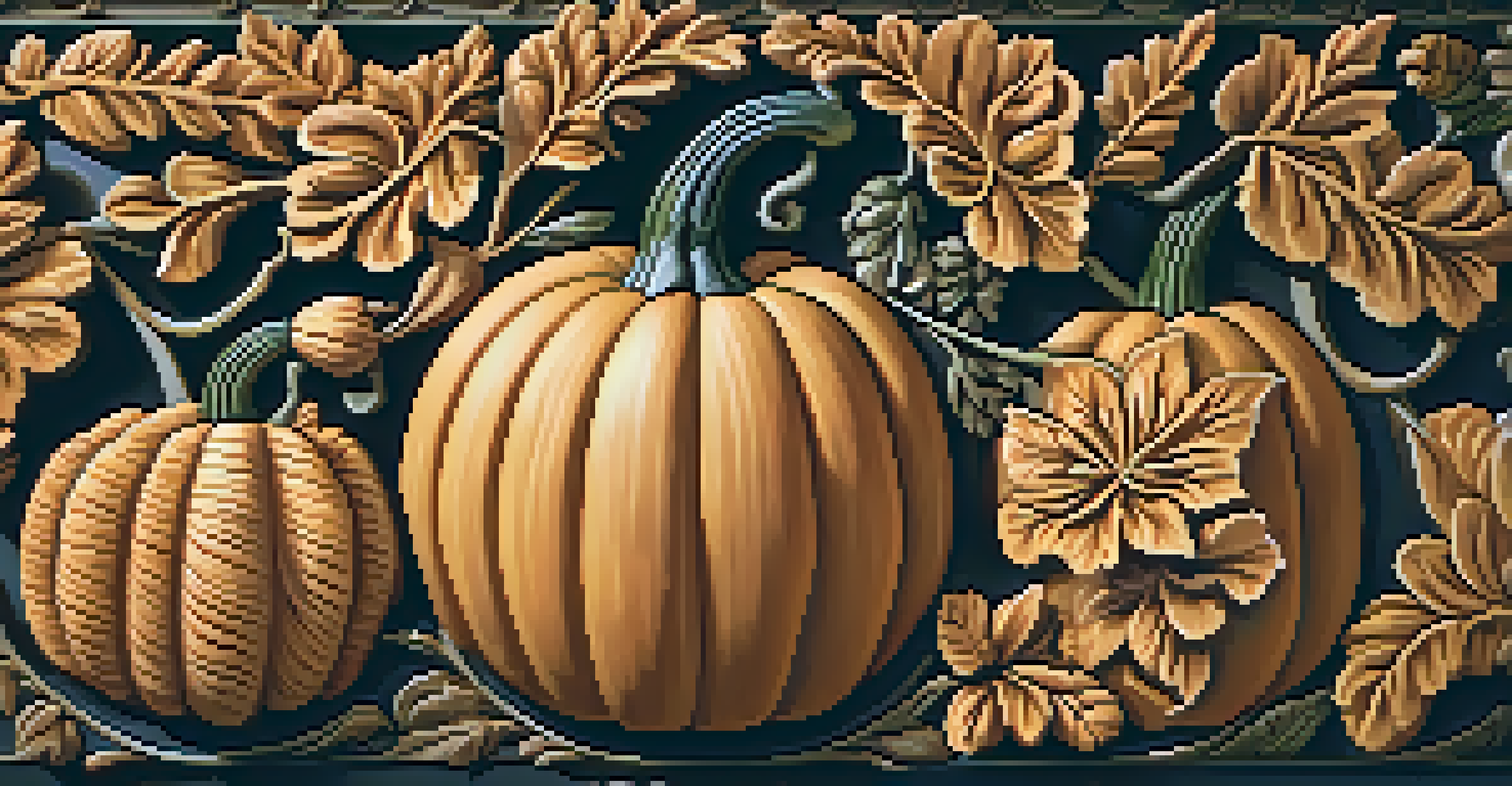Food Carving Competitions: Showcasing Artistic Culinary Skills

What Are Food Carving Competitions?
Food carving competitions are events where chefs and artists showcase their skills by transforming fruits, vegetables, and other edible items into stunning works of art. These competitions often highlight creativity, precision, and the ability to turn simple ingredients into intricate sculptures. Participants can range from professional chefs to culinary students, each bringing their unique flair to the table.
Art is the most beautiful of all lies.
At these events, you might see everything from delicate flowers carved from radishes to elaborate animal figures made from melons. The goal is not just to impress the judges but to delight onlookers and inspire fellow competitors. Food carving is a blend of art and culinary skill, creating a visual feast that often leaves spectators in awe.
While the crafting of these edible sculptures is a significant part of the competition, the storytelling behind each piece adds another layer of depth. Carvers often choose themes that resonate with their culture or personal experiences, making the competition not just about skill but also about expression.
The History of Food Carving
Food carving has a rich history that dates back centuries, originating in various cultures around the globe. One of the most notable traditions comes from Thailand, where intricate fruit and vegetable carvings are part of celebrations and festivals. This art form was historically used to enhance the presentation of dishes, making meals visually appealing and culturally significant.

In many cultures, food carving was a way to show hospitality and respect to guests. By creating beautiful displays, hosts communicated their dedication and appreciation for those they were serving. As globalization took hold, these techniques spread across borders, leading to the diverse styles of food carving we see today.
Food Carving as Art and Skill
Food carving competitions blend creativity and culinary expertise, allowing participants to transform simple ingredients into stunning edible sculptures.
Modern food carving competitions draw on these age-old traditions, while allowing for innovation and personal expression. As carvers learn from one another and adapt techniques, they also keep the history alive, blending the old with the new in creative and exciting ways.
Techniques Used in Food Carving
Food carving involves a variety of techniques that can make or break a piece. Some essential methods include the use of carving knives, peelers, and specialized tools for intricate designs. Mastering these tools allows artists to create detailed texture and form in their sculptures, transforming a simple carrot into a lifelike rose or a melon into a majestic swan.
Cooking is like love. It should be entered into with abandon or not at all.
One common technique is called 'relief carving,' where designs are carved into the surface of the fruit or vegetable, giving a three-dimensional effect. This method adds depth and dimension, making the piece more visually striking. Additionally, 'cutting' and 'shaping' techniques help in crafting the overall structure of the sculpture.
As with any art form, practice is key. Many carvers spend years honing their skills, experimenting with different techniques and styles until they find their unique voice in the culinary arts. This dedication not only enhances their craft but also elevates the competition, pushing boundaries and inspiring creativity.
The Role of Judging in Competitions
Judging plays a crucial role in food carving competitions, as it determines the winners and showcases the highest levels of skill and creativity. Judges typically assess pieces based on criteria such as creativity, technical skill, and presentation. This structured evaluation helps maintain a standard and encourages competitors to push themselves further.
Judges often have backgrounds in culinary arts, art, or design, giving them a well-rounded perspective on what constitutes a remarkable piece. Their feedback can be invaluable to participants, offering insights into areas of improvement and celebrating each artist's strengths. This two-way interaction fosters a sense of community and growth among carvers.
Rich History of Food Carving
Food carving boasts a diverse history, with roots in various cultures, particularly Thailand, where it enhances hospitality and visual presentation.
The judging process is also an opportunity for spectators to learn about the artistry involved in food carving. As judges explain their criteria and the reasoning behind their decisions, attendees gain a deeper appreciation for the skill and effort that goes into each sculpture. This educational aspect enhances the overall experience of the competition.
Notable Food Carving Competitions Around the World
Across the globe, numerous food carving competitions celebrate this unique form of art. One of the most renowned events is the 'World Fruit and Vegetable Carving Competition,' held annually in Thailand. This competition attracts talented carvers from all over, showcasing the best of traditional and modern techniques.
In the United States, events like the 'National Culinary Arts Competition' often include a food carving segment, providing a platform for local chefs to demonstrate their skills. These competitions not only highlight individual talent but also promote culinary arts as a whole, encouraging more people to explore the world of food carving.
These competitions often serve as a gathering place for enthusiasts, where they can share tips, techniques, and inspiration. The camaraderie and competitive spirit fostered at these events help to elevate the art of food carving and inspire future generations to take up the craft.
The Impact of Social Media on Food Carving
In recent years, social media has played a transformative role in the world of food carving. Platforms like Instagram and TikTok allow artists to showcase their work, connecting them with a global audience. This visibility can lead to increased interest in food carving, inspiring new artists to pick up the knife and start creating.
Videos and photos of food carving creations often go viral, sparking trends and challenges that encourage participation from amateur carvers. For example, the 'fruit carving challenge' invites users to try their hand at creating something beautiful, thus expanding the community beyond professional chefs. This democratization of the art form fosters a culture of sharing and learning.
Social Media Boosts Food Carving
Social media platforms have revolutionized food carving by connecting artists globally, fostering community engagement, and inspiring new creators.
Moreover, social media offers a space for feedback and interaction. Artists can receive comments, tips, and encouragement from fellow enthusiasts and admirers, fueling their passion and driving innovation in their designs. This interconnectedness strengthens the food carving community and keeps the art form evolving.
How to Get Involved in Food Carving
If you're interested in diving into the world of food carving, there are plenty of ways to start. Many culinary schools and community colleges offer classes that introduce beginners to the basics of this art form. Online tutorials and videos are also widely available, allowing you to learn at your own pace from the comfort of your home.
Joining local culinary clubs or online forums can connect you with like-minded individuals who share your passion for food carving. These communities often host workshops and events where you can practice your skills and gain valuable insights from experienced artists. Networking with fellow carvers can also open doors to competition opportunities.

As you begin your journey in food carving, remember that practice is essential. Start with simple designs and gradually challenge yourself with more complex projects. With time and dedication, you can transform ordinary fruits and vegetables into extraordinary works of art, making your mark in this captivating culinary field.